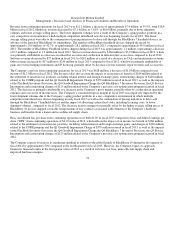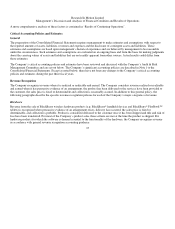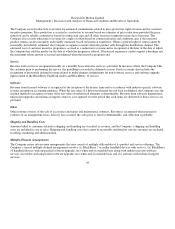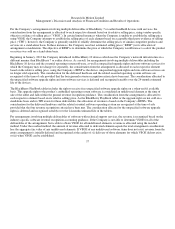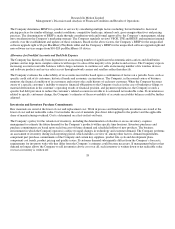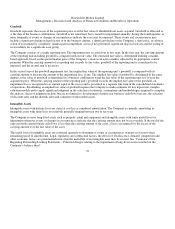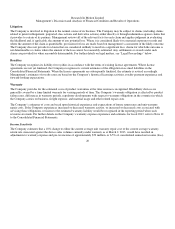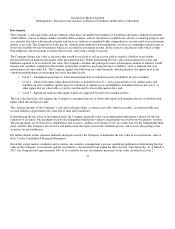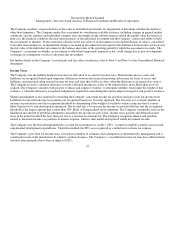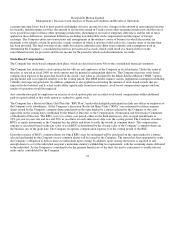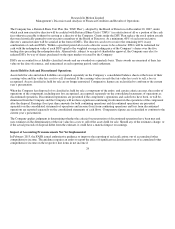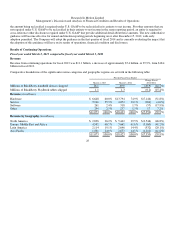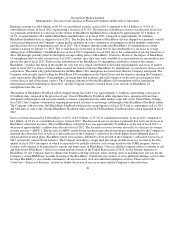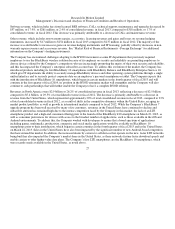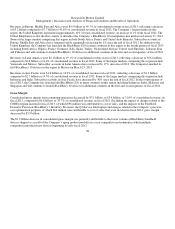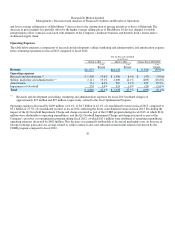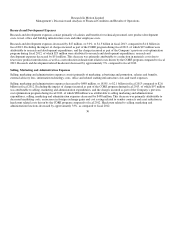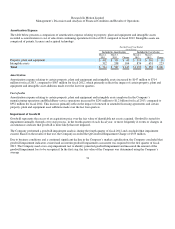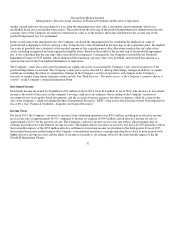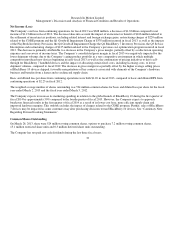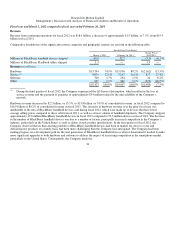Blackberry 2013 Annual Report Download - page 189
Download and view the complete annual report
Please find page 189 of the 2013 Blackberry annual report below. You can navigate through the pages in the report by either clicking on the pages listed below, or by using the keyword search tool below to find specific information within the annual report.
Research In Motion Limited
Management’s Discussion and Analysis of Financial Condition and Results of Operations
The Company has a Deferred Share Unit Plan (the “DSU Plan”), adopted by the Board of Directors on December 20, 2007, under
which each non-executive director will be credited with Deferred Share Units (“DSUs”) in satisfaction of all or a portion of the cash
fees otherwise payable to them for serving as a director of the Company. Grants under the DSU Plan replace the stock option awards
that were historically granted to non-executive members of the Board of Directors. At a minimum, 60% of each non-executive
director’s annual retainer will be satisfied in the form of DSUs. The director can elect to receive the remaining 40% in any
combination of cash and DSUs. Within a specified period after such a director ceases to be a director, DSUs will be redeemed for
cash with the redemption value of each DSU equal to the weighted average trading price of the Company’s shares over the five
trading days preceding the redemption date. Alternatively, subject to receipt of shareholder approval, the Company may elect to
redeem DSUs by way of shares purchased on the open market or issued by the Company.
DSUs are accounted for as liability-classified awards and are awarded on a quarterly basis. These awards are measured at their fair
value on the date of issuance, and remeasured at each reporting period, until settlement.
Assets Held for Sale and Discontinued Operations
Assets held for sale and related liabilities are reported separately on the Company’s consolidated balance sheets at the lower of their
carrying value and fair value less costs to sell, if material. If the carrying value exceeds the fair value less costs to sell, a loss is
recognized. Assets classified as held for sale are no longer amortized. Comparative figures are reclassified to conform to the current
year’s presentation.
When the Company has disposed of or classified as held for sale a component of the entity, and certain criteria are met, the results of
operations of the component, including any loss recognized, are reported separately on the consolidated statements of operations as
discontinued operations. Discontinued operations are presented if the component’s operations and cash flows have been, or will be,
eliminated from the Company and the Company will not have significant continuing involvement in the operations of the component
after the disposal. Earnings (loss) per share amounts for both continuing operations and discontinued operations are presented
separately on the consolidated statements of operations and income (loss) from continuing operations and loss from discontinued
operations are reported separately on the consolidated statements of cash flows. Comparative figures are reclassified to conform to the
current year’s presentation.
The Company applies judgment in determining whether the criteria for presentation of discontinued operations have been met and
uses estimates in the determination of the fair value less costs to sell of the assets held for sale. Should any of the estimates change, or
if the actual proceeds of disposal differ from the estimate, it could have a material impact on earnings.
Impact of Accounting Pronouncements Not Yet Implemented
In February 2013, the FASB issued authoritative guidance to improve the reporting of reclassifications out of accumulated other
comprehensive income. The guidance requires an entity to report the effect of significant reclassifications out of accumulated other
comprehensive income on the respective line items in net income if
24


